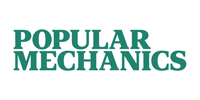
In August 2019, the Japanese multinational holding firm SoftBank invested $110 million in Swiss company Energy Vault. It was a major boon for the company, which has a somewhat unique take on renewables: It stores potential energy through the use of stacked concrete blocks. Energy Vault will use the investment to build its first two full-scale models in Italy and India.
Energy Vault is only two years old, but has earned its investment through growing interest in energy storage. As renewables rise in use and their prices drop, energy storage is becoming increasingly crucial. Left to their own devices, energy sources like solar panels or wind turbines don’t run forever; solar panels can only produce electricity when the sun’s out, for example, while wind turbines only turn when there’s wind.
Enter storage methods like Energy Vault.
When solar panels in a field in Rome, for example, begin producing energy, they would siphon part of that energy off to a storage facility like Energy Vault. With that energy stored, the company could then run the energy when there was no wind or a cloudy day.
There are many ideas for renewable energy batteries. Energy Vault’s consists of an almost 400-foot tall, six-armed crane with custom-built concrete blocks weighing almost 35 metric tons each. As solar or wind energy is siphoned into an Energy Vault tower, an A.I. directs the concrete blocks to rise up. Then, according to the company’s website, the blocks are “returned to the ground and the kinetic energy generated from the falling brick is turned back into electricity.”
That kinetic energy then turns a motor, which passes through an inverter, sending the energy back into the grid. Energy Vault claims the process had a “round-trip efficiency between 80 to 90 [percent].”
Energy Vault says its tower design means it can scale up or down easily, based on a location’s needs. The company’s website discusses options of 20, 35, and 80 MWh storage capacity as well as anywhere between 4 to 8 MW of continuous power discharge for 8 to 16 hours. What drew investors to the idea in August was its simplicity.





